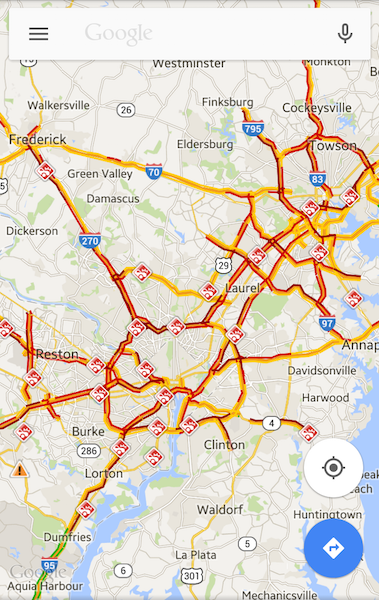I know I’m in the minority here, but I love cold weather. One of the major drawbacks of winter that we can all agree to hate, however, is driving in it. Or getting around in general, for that matter. Slick roads, unreliable city snow plows, and chipping ice off of windshields all get old very, very quickly.
Fortunately, technology has once again stepped up and offered us some tools that can help us get more information before we head out (or while we’re sitting in traffic).
Plow Trackers
Some cities have invested in technology that allows their citizens to track snow plows in real time. It’s pretty simple: a GPS device is attached to the trucks and the data is gathered and overlaid onto a map of the city. In New York’s case at least, the paths are color coded to show how long it’s been since a plow passed through.
![]()
If you remember the days when you could only stare out the window wondering when your street was going to be plowed, this kind of information can make you feel pretty good. True, the app might not get your street cleared any faster, but it saves you from wondering—and it saves the city from a bunch of angry phone calls.
That is, unless you live in St. Louis, in which case your only option is to embrace the fact that the plows will never come…
Waze
Waze isn’t just great for winter driving—it’s great for any long trip. Basically, Waze is an app that uses reports from real drivers to warn others of all kinds of things, like road closures, potholes, traffic jams, and even speed traps. Checking Waze before you leave can give you time to alter your route, or to prepare yourself for a long, cold wait. (Or a sunny, warm one getting into the Super Bowl.)
Waze has become pretty popular. Popular (and reliable) enough, in fact, that some reports are now being used by…
Google Maps
Google Maps isn’t just great for finding alternate routes or getting directions anymore. Its live traffic feature can give you an invaluable warning to big traffic jams and their causes, whether it’s an accident or a road closure. And as noted above, some of this information is imported from Waze, which means it’s coming from other drivers in the same area.
The traffic feature is also automatically used by Google to find the best directions given the situation. If there’s a traffic jam, you get a choice to select a faster route around it. Some have even suggested that traffic data can be used to give different users different directions on busy routes in order to lighten traffic.
Even though they may not clean your car off for you, these apps are all nice to have when you find yourself out and about this winter. At the very least, you can avoid a situation like this:

Ain’t nobody got time for that.



